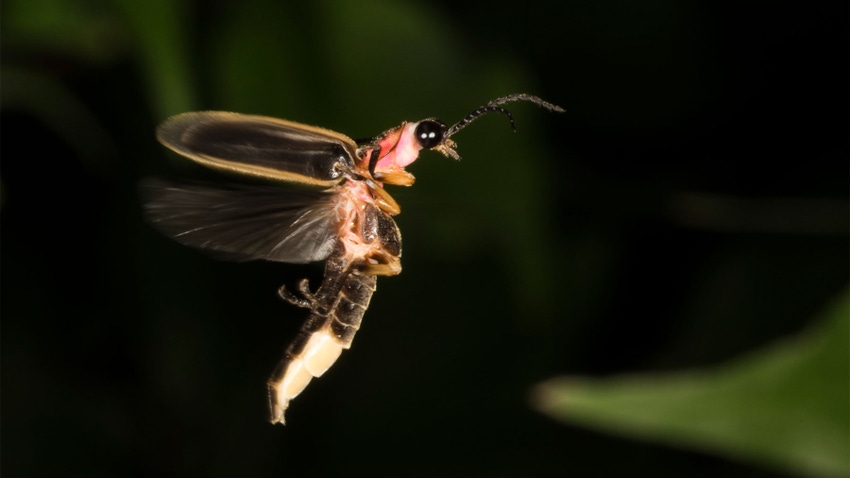March 26, 2024

by Tony Bailey
The field behind the barn on Grandma’s farm near Goshen, Ind., lit up with fireflies when I was a kid. But how about now? Do you see many fireflies?
How do fireflies and other beneficial insects tie into conservation and cropping systems? Creating a successful high-residue cropping system through reduced till, strip till or no-till takes some work. Including cover crops in your operation is necessary to build biology that no-till alone fails to do.
If residue sticks around for more than two years, your biology is not cycling fast enough. However, this change that comes with building soil biology and a beneficial insect population helps thwart concerns regarding pest populations. Some believe the threats of pest damage are greater in high residue and cover crops.
As with any system, you need a plan. Scout early and often. It takes several years of reduced tillage and cover crops to build biology and a beneficial insect population.
Promoting beneficial bugs
Practicing these steps can promote beneficial insects:
Plant when soils are ready. This is the foundation of pest management. If planted too early, cold or wet conditions slow germination and emergence, making plants more susceptible to early-season pests such as seed corn maggot, wireworms and slugs. Early-season diseases include seed rots, seedling blights and root rots.
Manage for healthy crops. Healthy crops are more resilient against insects. Improve drainage where needed; minimize soil compaction and surface crusting; provide proper soil pH and fertility; control weeds and diseases; and pay attention to planter depth, speed and seed-slot closure.
Use seed treatments carefully. Insecticidal seed treatments meant to suppress occasional pests can also have negative effects on beneficials. Ensure they are necessary, especially in soybeans. Insecticidal seed treatments do not control slugs. Beneficial insects feeding on slugs can be killed. Firefly larvae eat slugs.
Scout early and often. This is key to any Integrated Pest Management program. Properly identify all pest species.
Understand insects found in cover crops. If using cover crops, watch for black cutworm, armyworm, stinkbugs and slugs. But cover crops promote pest predators and parasites, as well as pollinators. Is the insect you find friend or foe? Learn the difference.
Properly identify and consider all beneficial organisms. This will give you the status and potential of your natural defenses against pest outbreaks. Encourage beneficial species like ground beetles, minute pirate bug and spiders with a soil health management system including no-till and strip till, cover crops, and buffers.
Ensure economic thresholds are met. Do not add an insecticide or fungicide just because it seems like the thing to do. If an economic threshold is met, follow all pesticide label instructions.
Learn weed suppression. When you remove tillage, weed species and populations shift. If there is enough cover crop biomass, it can compete with some weed species. Crimping can provide a mulch to slow weed seed germination. Ground beetles eat seeds of some weeds.
Adopting and building successful high-residue cropping systems takes work and patience. And just like catching fireflies, it too is a challenging and rewarding experience. Talk with your local soil and water conservation district or Natural Resources Conservation Service staff member to start, maintain or build on your soil health journey.
Bailey is state agronomist with NRCS in Indiana. He writes on behalf of the Indiana Conservation Partnership.
You May Also Like




